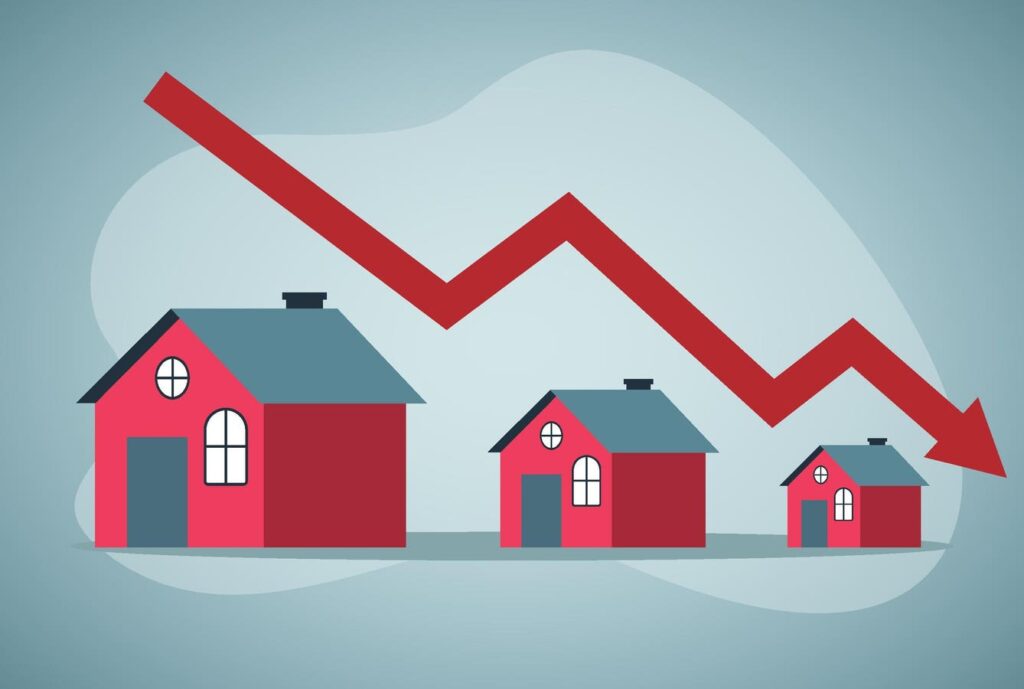In every deal, sellers optimize for two variables: price and time.
In the real world, however, those variables are deeply entangled. Time on the market isn’t free. It imposes a discount. And, like in finance, where holding an asset too long incurs costs, holding a listing introduces risk. We quantified that risk by tracking how asking prices deteriorate as listings age. The result is a measure of what we call asking price decay.
It’s a concept that mirrors the financial world, where traders account for “theta,” which is the loss of value in an option as time passes. In real estate, time on market is a similar drag on listing prices. The longer a home sits unsold, the more likely it is to be discounted, often sharply.
How Discounts Build Over Time
We analyzed the Manhattan and Brooklyn markets at biweekly intervals across 20+ years. The resulting curve shows the median discount from the original asking price as a function of time on market over the course of a typical six-month exclusive listing contract.
This curve plays out almost regardless of macro environment, seasonality, or demand shifts. Essentially, the market begins penalizing listings as soon as they exceed the two-to-four-week threshold. Buyers read time as weakness. The implication is that overpricing and failing to get traction early means more than just a longer time to sell; it means a lower selling price overall.
Hot vs. Cold Markets
Not all markets decay at the same pace. When we split the data by market regime (hot vs. cold), the differences become clear.
In hot markets (such as 2015), the curve is flatter, and listings can sit for 30 to 45 days with minimal discounting as buyers compete at prices close to the ask and sellers retain pricing leverage longer. In weak markets (such as 2009), the curve is steeper and discounts appear quickly. Sellers who don’t reprice early see any leverage they may have had evaporate. Today’s market is neither hot nor cold, so the present asking price decay curve likely resembles the overall average.
This is a familiar pattern in any market: when liquidity is strong, prices hold up. When liquidity evaporates, spreads widen, and discounts deepen.
Does Property Type Matter?
Does property type (condo, coop, or townhouse) meaningfully affect the decay curve?
While intuitively, it might be expected to, since coops, condos, and townhouses vary widely in buyer profile, price point, and closing complexity, the data suggests a more nuanced story. For apartments, the decay curve is remarkably consistent in shape, which suggests the phenomenon is more about market liquidity. Coops and condos show flatter, more stable curves, reflecting a larger pool of buyers and a more liquid market structure. Townhouses, however, which are generally higher-priced, lower-turnover assets, experience steeper declines in pricing power over time.
For example, by day 70, Manhattan condos retain almost 97% of their original asking price, while Manhattan townhouses have already slipped to 92%. After 180 days, at the end of the listing agreement, the gap widens even more, with condos holding around 91%, while townhouses fall to 83%.
Tactical Takeaways
Here’s how to use this curve:
1. Act Fast or Reprice Fast
The window to make a full-price sale is tight. Listings that don’t catch a bid in the first 30–45 days should consider a tactical price reset to avoid the long tail of discounting. The market has spoken.
2. Watch the Curve for Regime Change
A flattening decay curve suggests improving liquidity and can be seen as a bullish signal, which is good to sell into. On the other hand, a steepening curve suggests buyers are reasserting their power, which is a bearish signal for sellers as it implies a slowing market.
3. Use the Curve to Predict Market Health
Think of it as a sentiment index. Fast decay = fear and thin demand. Slow decay = conviction and competition.
Time Is a Tax
The asking price may be set by the seller, but its decay is enforced by the market. Buyers apply pressure, urgency fades, and expectations bend. Thinking like a trader makes the message clear: the market doesn’t pay premiums for long. Time taxes them away by applying downward pressure, week by week. Luckily, this tax is not evenly levied across all properties. The biggest time tax is evident in less liquid segments, such as Manhattan townhouses. Meanwhile, more fluid markets, such as Brooklyn condos or coops, tend to retain pricing power for longer.
In the end, asking price decay, like any tax, hits hardest where there’s the least flexibility. As the Manhattan and Brooklyn markets transition into the seasonally slower summer months, understanding the impact of time on prices is paramount. For sellers, the lesson is clear: price realistically and move quickly. In real estate, time is not your friend.
Read the full article here

